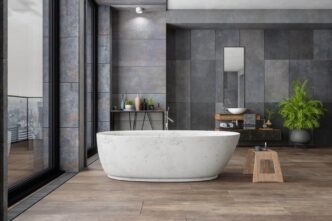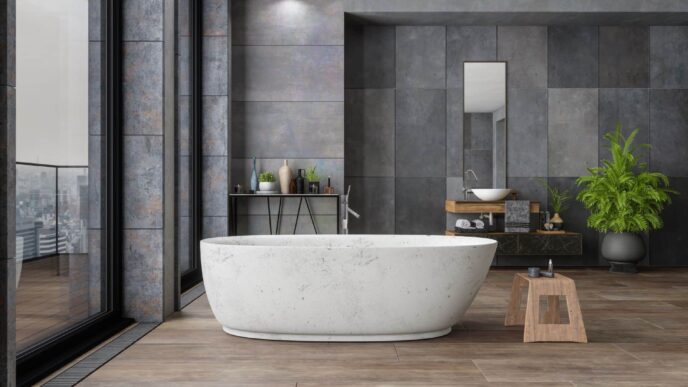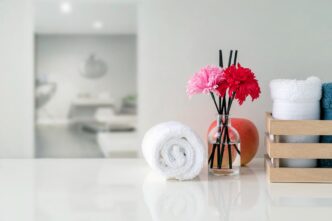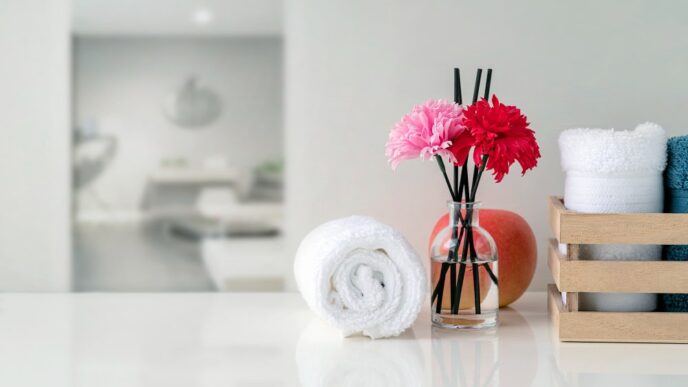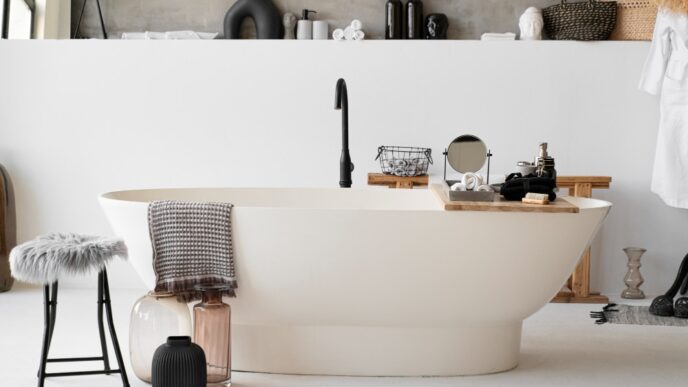Indoor Air Quality (IAQ) refers to the atmospheric conditions within and around buildings and structures, encompassing spaces such as homes, offices, and other occupied environments. The significance of IAQ lies in its direct correlation with the health, comfort, and overall well-being of building occupants. As awareness of environmental factors influencing health continues to grow, understanding and managing the air within our personal and professional spaces has become increasingly critical.
A fundamental aspect often overlooked in public health discussions is the profound amount of time individuals spend indoors. Data indicates that humans typically spend approximately 90% of their lifetime within indoor environments in Western countries. This extensive indoor exposure means that the quality of the air breathed inside buildings is a paramount determinant of cumulative health outcomes. If public health efforts primarily concentrate on outdoor air quality regulations while neglecting the environments where people spend the vast majority of their lives, a substantial contributor to chronic health issues may be overlooked. The prolonged exposure to higher concentrations of indoor pollutants, even if outdoor air is deemed acceptable, can lead to a greater burden on human health over time. This highlights that individual and building-level interventions are as, if not more, crucial than purely external environmental policies for overall population health.
Counterintuitively, concentrations of pollutants indoors can be significantly higher than outdoors, sometimes by a factor of ten, positioning indoor air pollution as a major health hazard. The global impact of this issue is substantial, with the World Health Organization (WHO) estimating that cooking-related indoor air pollution alone contributes to 3.2 million premature deaths annually, disproportionately affecting women and children in developing nations. Direct health consequences stemming from exposure to indoor air pollutants are diverse, ranging from irritation of the upper airway system and exacerbation of pre-existing respiratory or cardiovascular conditions like asthma, to potentially carcinogenic effects. Common manifestations of poor IAQ, often collectively termed “sick building syndrome,” include symptoms such as burning eyes, scratchy throat, blocked nose, and headaches.
The elevated indoor pollutant concentrations are attributable to a complex interplay of factors. These include the infiltration of pollutants from external sources, the continuous release of gases (known as “off-gassing”) from furniture and furnishings, such as carpets, and a myriad of indoor activities like cooking, cleaning, painting, and smoking. Furthermore, occupants can inadvertently introduce contaminants into buildings on their clothing or bodies, including common dust, residues from consumer products (e.g., cleaners, air fresheners), and allergens like pet dander. Beyond these direct sources, improper building design, inadequate maintenance of heating, ventilation, and air-conditioning (HVAC) systems, and poor housekeeping practices—such as neglecting dusty surfaces or allowing stagnant water—further compound IAQ challenges by creating environments conducive to microbial growth and pollutant accumulation. This intricate relationship underscores that a building’s structural integrity, operational practices, and even psychological comfort factors (like temperature and humidity) are deeply intertwined with the presence and perception of indoor air quality. Thus, addressing IAQ necessitates a comprehensive approach to building management and occupant behavior, recognizing that the overall “health” of a building directly influences the health and well-being of its inhabitants.
Common Indoor Air Pollutants: Identifying the Culprits
Understanding the specific types of pollutants prevalent in indoor environments is the first step toward effective mitigation. Many of these contaminants are not readily apparent, making their identification a critical component of maintaining healthy indoor air.
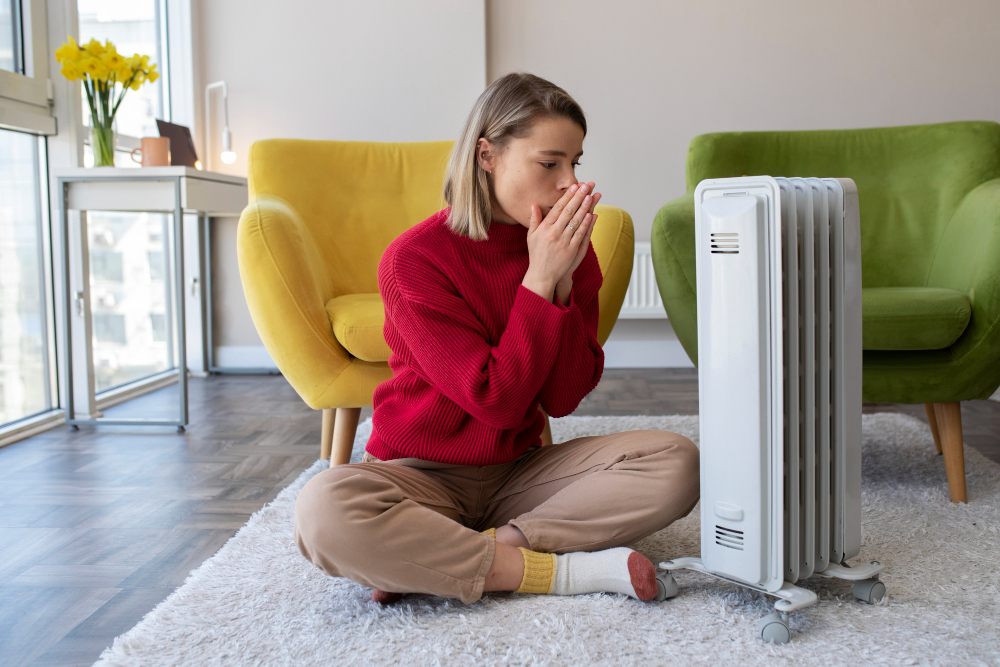
Volatile Organic Compounds (VOCs): Sources, Health Effects, and Initial Detection
Volatile Organic Compounds (VOCs) constitute a diverse group of chemicals characterized by their ability to vaporize readily at room temperature, becoming airborne. They represent a significant concern due to their widespread presence and potential health impacts. Indoor concentrations of VOCs are consistently higher than outdoor levels, often exceeding them by up to ten times. These compounds are continuously released through a process known as “off-gassing” from a vast array of common household products and building materials.
Sources of VOCs are ubiquitous within residential and commercial spaces. Building materials, such as paints, paint strippers, varnishes, finishes, caulks, sealants, adhesives, flooring, carpets, and pressed wood products, are common contributors. Many home and personal care products, including cleaners, disinfectants, air fresheners, cosmetics, deodorants, and pesticides, also contain VOCs. Furthermore, various indoor activities contribute to VOC levels; these include tobacco smoking, dry-cleaned clothing, arts and crafts supplies (e.g., glues, paints, permanent markers), the operation of gas and wood-burning stoves, and the use of office equipment like printers and copiers. Specific examples of common VOCs include benzene, formaldehyde, toluene, xylene, and trichloroethylene, many of which are known to have adverse health effects.
Exposure to VOCs can elicit immediate symptoms such as irritation of the eyes, nose, and throat, headaches, nausea, dizziness, and difficulty breathing. Prolonged exposure can lead to more severe health issues, including damage to the liver, kidneys, and central nervous system, with some VOCs recognized as carcinogens. For individuals with pre-existing conditions like asthma and COPD, VOC exposure can significantly worsen symptoms. While VOCs are pervasive indoors, direct testing for them is typically recommended only when a specific source has been identified or when medical evaluations of occupants suggest their presence. The fact that many significant indoor pollutants, including VOCs and carbon monoxide, are odorless and colorless creates a “hidden threat” scenario. This makes them undetectable by human senses, meaning that relying solely on sensory cues is insufficient for a comprehensive IAQ assessment. This necessitates the use of technological solutions, such as specialized monitors, or professional intervention for accurate detection and effective mitigation, emphasizing the importance of proactive measures over reactive responses based on perception.
Mold: The Moisture Menace – Growth Conditions, Health Impacts, and Visual Cues
Mold is a fungal growth that thrives on damp or decaying organic matter and can appear in various colors, though its color does not inherently indicate its danger level. The fundamental principle for mold control is moisture control. Molds require moisture and a carbon source, such as building materials, to proliferate indoors. Consequently, excess moisture is the primary catalyst for indoor mold growth.
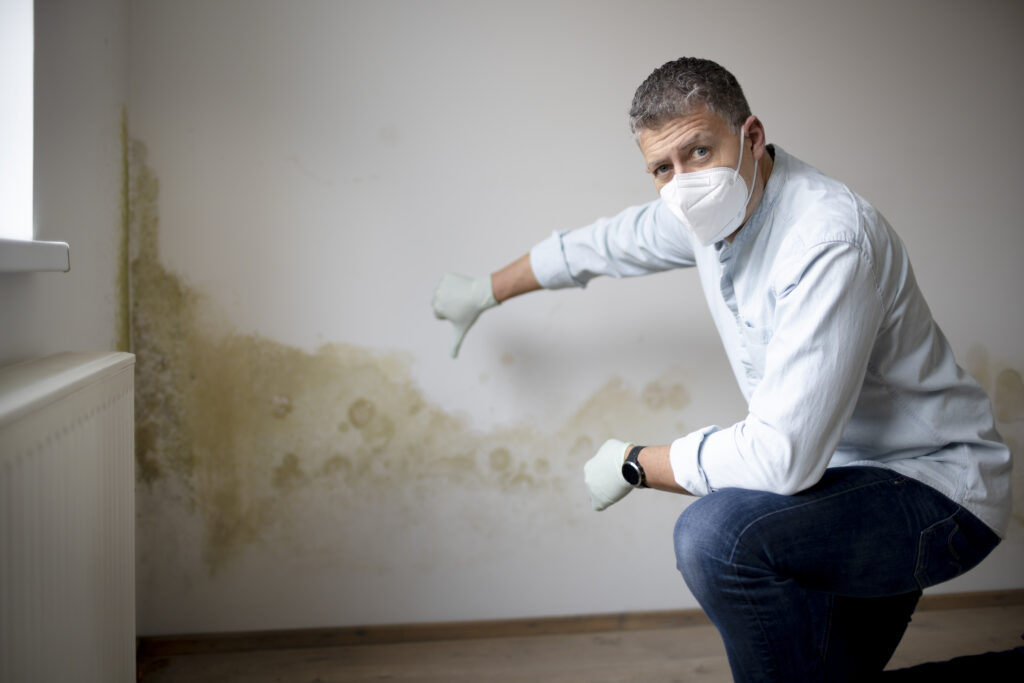
Airborne mold spores are a common allergen, and individuals sensitive to specific types of mold may experience allergic symptoms such as sneezing, runny nose, upper respiratory irritation, coughing, and eye irritation. Exposure to excessive quantities of mold can also increase the frequency or severity of asthma symptoms. The presence of mold is often indicated by visible signs, such as discoloration or fuzzy growth on surfaces, or by a distinct musty odor. Other cues include leaks, persistent moisture issues, and condensation. For identifying mold problems, thorough visual inspections and the detection of musty odors are often more reliable than routine air sampling.
Allergens: Dust Mites, Pet Dander, Pollen, and More – Sources, Symptoms, and Basic Management
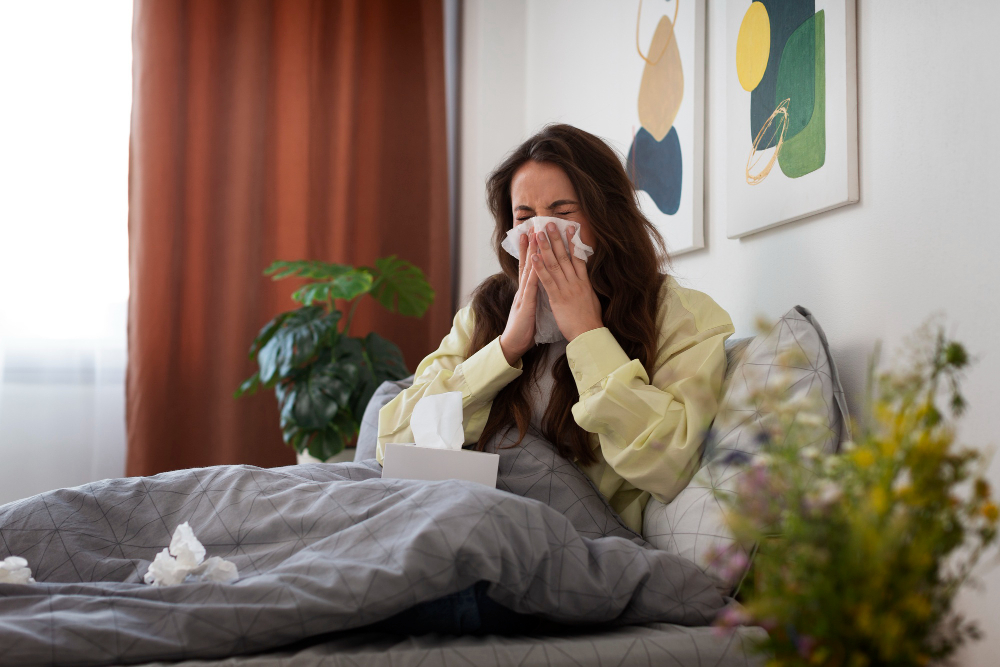
Common indoor allergens include dust mites, dander from cats and dogs, mold spores, and cockroach allergens. While pollen is primarily an outdoor allergen, it can readily infiltrate indoor environments.
Sources of these allergens are diverse and often embedded within the home environment. Dust mites flourish in warm, humid conditions and are commonly found in bedding, carpets, soft furniture, and stuffed toys. Pet dander, consisting of shed skin cells, is produced by all furry or feathered animals. Cockroaches, particularly prevalent in urban and southern regions, contribute allergens through their droppings and body parts. Exposure to these allergens can trigger allergic reactions in a significant portion of the population, leading to symptoms such as sneezing, swollen airways, or asthma-like attacks. Basic management strategies for indoor allergens involve controlling direct contact with the allergens, enhancing ventilation, utilizing air cleaning devices, and reducing indoor humidity to inhibit the growth of dust mites and mold.
Humidity: The Invisible Factor – Its Role in IAQ and Ideal Levels
Humidity levels exert a significant influence on indoor air quality. Elevated humidity creates a moist environment highly conducive to the proliferation of mold and dust mites, thereby exacerbating associated health issues. To maintain healthy IAQ and prevent the growth of these biological contaminants, indoor relative humidity should ideally be maintained between 30% and 50%. Monitoring indoor humidity levels can be easily accomplished using a simple moisture or humidity gauge, commonly known as a hygrometer, which is widely available at hardware stores. Humidity, while not a direct pollutant itself, acts as a “gateway” or enabling factor for biological contaminants. High humidity creates a favorable environment for mold growth and dust mite populations, which then leads to increased exposure to allergens and toxins, ultimately manifesting in respiratory and allergic symptoms. This underscores that humidity control is not merely about comfort but serves as a foundational strategy for preventing a cascade of biological IAQ problems, making dehumidification and moisture control critical initial steps.
Other Key Pollutants: Carbon Monoxide, Radon, Secondhand Smoke, and Particulates
Beyond the commonly discussed pollutants, several other significant contaminants can compromise indoor air quality.
Carbon Monoxide (CO) is an odorless, colorless, and highly poisonous gas. Its primary sources include incomplete combustion from fuel-burning appliances such as furnaces, gas stoves, unvented kerosene and gas space heaters, and leaking chimneys. Tobacco products also contribute to indoor CO levels. Exposure to CO can lead to severe illness and can be fatal.
Radon is a naturally occurring radioactive gas that originates from the decay of uranium in soil and rocks. It can seep into homes through tiny cracks in foundations. Long-term exposure to elevated radon levels is linked to an increased risk of cancer.
Secondhand Smoke is derived from burning tobacco products. It comprises a complex mixture of fine particulate matter, carbon monoxide, formaldehyde, and thousands of other chemicals. Exposure to secondhand smoke can result in inner ear infections, asthma, and lung cancer in nonsmokers. The U.S. Environmental Protection Agency (EPA) has classified tobacco smoke as a confirmed cancer-causing agent.
Atmospheric Particulate Matter (PM) refers to microscopic airborne particles. These particles can originate from various indoor sources, including combustion processes, cleaning activities, and indoor gas-to-particle reactions, or they can infiltrate from outdoor environments. Exposure to indoor particulate matter can adversely affect the health of occupants and is linked to respiratory issues.
Other notable indoor pollutants include Asbestos, found in deteriorated building materials, Lead, often present in dust from old paint, and Legionella bacteria, which can cause serious building-related illnesses such as Legionnaire’s disease. The consistent identification of building materials, furnishings, and even the HVAC system itself as significant sources of pollutants (e.g., VOCs, mold, asbestos, lead) indicates a fundamental shift in understanding buildings. They are no longer merely shelters but are recognized as active contributors to indoor air pollution. This suggests that modern construction practices, material selection, and energy efficiency efforts, which can inadvertently reduce natural ventilation, may trap and concentrate these internally generated pollutants. Therefore, initiatives like “green building” and careful material selection are not just about environmental sustainability but are fundamental to public health.
Table: Common Indoor Air Pollutants at a Glance
This table provides a concise overview of common indoor air pollutants, their primary sources, key health effects, and initial detection cues, offering a quick reference for understanding these pervasive threats.
| Pollutant | Primary Sources | Key Health Effects | Initial Detection Cues |
| Volatile Organic Compounds (VOCs) | Paints, varnishes, adhesives, carpets, pressed wood products, cleaning supplies, personal care products, tobacco smoke, cooking, office equipment | Eye/nose/throat irritation, headaches, nausea, dizziness, difficulty breathing, liver/kidney/CNS damage, cancer, asthma/COPD exacerbation | Chemical odors (though many are odorless), symptoms, professional testing if suspected |
| Mold | Excess moisture, leaks, high humidity, damp materials, stagnant water | Allergic reactions (sneezing, runny nose, cough, eye irritation), asthma exacerbation | Visible growth (various colors), musty odors, water damage, condensation |
| Allergens | Dust mites (bedding, carpets, soft furniture), pet dander (fur/feathered pets), pollen (outdoor infiltration), cockroach droppings/body parts | Allergic symptoms (sneezing, swollen airways, asthma attacks) | Symptoms, presence of sources (pets, old carpets) |
| Humidity | Cooking, bathing, unvented dryers, leaks, humid climates | Promotes mold and dust mite growth, discomfort | Moisture/humidity gauge, condensation on surfaces |
| Carbon Monoxide (CO) | Malfunctioning furnaces, gas stoves, unvented heaters, leaking chimneys, tobacco smoke | Sickness, dizziness, headaches, nausea, fatigue, fatal at high concentrations | CO detector, symptoms, appliance malfunction signs (sooting, odors) |
| Radon | Natural breakdown of uranium in soil, rocks, and water; seeps into foundations | Lung cancer (long-term exposure) | Radon test kits/monitors |
| Secondhand Smoke | Burning tobacco products (cigarettes, cigars, pipes) | Inner ear infections, asthma, lung cancer (non-smokers), respiratory illnesses | Odor, visible smoke |
| Particulate Matter (PM) | Indoor combustion (cooking, candles), cleaning, outdoor infiltration, secondary aerosols | Respiratory issues, cardiovascular conditions | Visible dust, haze, symptoms, professional monitors |
| Asbestos | Deteriorated building materials (insulation, flooring, ceiling tiles) | Lung cancer, mesothelioma, asbestosis | Professional inspection, material testing |
| Legionella Bacteria | Stagnant water in HVAC systems, cooling towers, plumbing | Legionnaire’s disease, Pontiac fever | Medical diagnosis, professional testing of water sources |
Implementing Solutions: Strategies for Cleaner Air
Effective indoor air quality management requires a multi-pronged approach, addressing pollution at its source, enhancing air exchange, and utilizing advanced filtration technologies.
The Foundation: Source Control
Source control is widely recognized as the most effective strategy for improving indoor air quality. This fundamental approach involves either eliminating individual sources of pollution or significantly reducing their emissions.
Methods of source control are diverse and often involve mindful choices in product selection and diligent maintenance practices. Some sources, such as materials containing asbestos, can be sealed or enclosed to prevent fiber release, while appliances like gas stoves can be adjusted to minimize emissions. When purchasing paints, building supplies, and home care items, prioritizing products labeled “Low VOCs” is crucial. Consumers should always read product labels carefully and avoid or limit the use of items containing harmful ingredients. Proper handling and storage are also vital: manufacturers’ directions should always be followed when using products that may release pollutants, and items containing VOCs should be stored outdoors or in well-ventilated areas, never in garages directly connected to living spaces. Safe disposal of leftover or unused products is also important.
A critical source control measure is to prohibit smoking anywhere inside the home or car, as tobacco smoke is a significant contributor of VOCs and numerous other carcinogens. Furthermore, meticulous moisture management is paramount for controlling mold growth. The key to preventing mold is to control moisture; this entails promptly cleaning any visible mold and immediately addressing water problems. Water-damaged areas and items should be dried within 24-48 hours to prevent mold proliferation. Reducing overall indoor humidity also plays a crucial role in deterring both mold and dust mites. Regular inspection and maintenance of fuel-burning appliances, such as furnaces, gas stoves, and fireplaces, are essential to check for leaks and ensure proper installation, usage, and adjustment. Installing a carbon monoxide alarm is a vital safety measure. Effective pest control, including using traps for cockroaches and mice and sealing cracks to prevent re-infestation, helps eliminate allergenic residues and prevent infestations. Food and garbage should never be left uncovered. Finally, consistent cleaning practices, such as regular dusting and vacuuming (ideally with a HEPA-filtered vacuum cleaner), and using damp cloths for dusting to prevent particle redistribution, are integral to source control. The presentation of solutions in a hierarchical manner—starting with source control, then ventilation, and finally air purification—reveals a strategic approach to IAQ management. Addressing the problem at its origin (source control) is inherently more effective than merely diluting or filtering pollutants once they are airborne. This suggests that a truly effective IAQ strategy involves a “layered defense,” where multiple methods are employed synergistically, rather than relying on a single solution. For instance, a HEPA filter is ineffective against VOCs, and activated carbon filters do not remove particulate matter, necessitating multi-stage filtration or a combination of technologies for comprehensive pollutant removal.
Ventilation: Bringing in Fresh Air
Following source control, ventilation serves as the next critical step in improving indoor air quality. Often referred to as the “lungs” of a home, ventilation involves introducing fresh outdoor air to dilute indoor pollutants and reduce humidity. Outdoor air typically contains two to five times fewer pollutants than indoor air, making this exchange beneficial.
Natural Ventilation: Harnessing the Power of Windows and Fans
The simplest and most cost-effective method of ventilation is natural ventilation. This involves opening windows and doors for at least five minutes daily, with 15-20 minutes being even more effective, to facilitate air circulation. Creating a cross-breeze by opening windows on opposite sides of a room or house establishes a current of air that sweeps through, expelling stale indoor air. While ceiling fans do not directly remove stale air, they significantly enhance air circulation, particularly when combined with open windows, thereby improving overall airflow and occupant comfort. However, natural ventilation is dependent on occupant initiative and can be inconsistent, especially during periods of extreme outdoor temperatures or adverse weather conditions.
Mechanical Ventilation: Spot Systems, Whole-House Solutions (HRVs & ERVs)
Mechanical ventilation systems utilize fans and mechanical means to move air, providing more consistent and controlled air exchange.
Spot Ventilation involves the use of outdoor-vented exhaust fans in specific areas that generate high levels of pollutants or moisture. In bathrooms, exhaust fans (at least 50 CFM) should be operated during bathing and for 30-45 minutes afterward to effectively remove moisture and gases. In kitchens, installing and utilizing vented range hoods (at least 100 CFM) during cooking is essential to remove fumes, airborne particles, and moisture generated by cooking processes.
Whole-House Ventilation Systems provide continuous and controlled air exchange throughout the entire home. These systems are particularly crucial for energy-efficient or tightly built homes that inherently lack sufficient natural infiltration. The observation that efforts to make buildings more energy-efficient can inadvertently reduce natural airflow and thus “backfire” on IAQ highlights a critical dilemma. The solution lies in mechanical ventilation systems like Heat Recovery Ventilators (HRVs) and Energy Recovery Ventilators (ERVs), which are specifically engineered to provide the necessary air exchange while simultaneously recovering energy. This suggests that modern, tightly constructed homes are not merely beneficiaries but require mechanical ventilation as a critical component for maintaining occupant health without sacrificing energy efficiency. This understanding implies a shift in building design and HVAC system integration, moving away from reliance on incidental air leakage for ventilation.
- Heat Recovery Ventilators (HRVs): These systems transfer heat from outgoing stale indoor air to incoming fresh outdoor air via a heat exchanger. HRVs are highly effective in colder, dryer climates where retaining heat during the winter months is a primary concern.
- Energy Recovery Ventilators (ERVs): Similar to HRVs, ERVs transfer both heat and moisture between the outgoing and incoming airstreams. This dual capability makes them ideal for all climates, especially humid ones, as they help regulate indoor humidity, prevent mold growth, and reduce the load on air conditioning systems by removing excess moisture from incoming air.
Both HRVs and ERVs offer significant benefits, including a continuous supply of fresh, filtered, and tempered outdoor air, improved IAQ, substantial energy savings through the recovery of heating and cooling energy, balanced humidity levels (particularly with ERVs), minimized drafts, and reduced operational noise. When selecting an HRV or ERV system, it is advisable to look for “HVI Certified” products. This certification ensures accurate and creditable performance ratings, as inflated ratings are common for uncertified units.
Air Purification Systems: Advanced Filtration for Your Home
Air purification systems operate by drawing indoor air through a fan, directing it through various filters that capture and neutralize pollutants and particles, and then circulating cleaner air back into the room. The efficiency of these systems is often measured by their Clean Air Delivery Rate (CADR), which indicates the volume of filtered air delivered per unit of time.
Understanding Air Purifier Technologies
- HEPA (High-Efficiency Particulate Air) Filters: These are mechanical filters composed of a dense network of fibers designed to trap particles. HEPA filters are highly effective, theoretically removing at least 99.97% of airborne particles as small as 0.3 microns (µm), which is considered the Most Penetrating Particle Size (MPPS). This includes common allergens like dust, pollen, mold spores, and bacteria. Particles larger or smaller than 0.3 microns are trapped with even higher efficiency. A key limitation, however, is that HEPA filters do not remove gases or Volatile Organic Compounds (VOCs) from the air. The Minimum Efficiency Reporting Values (MERVs) indicate a filter’s ability to capture larger particles (between 0.3 and 10 µm), with higher MERV ratings signifying better performance.
- Activated Carbon Filters: These filters utilize highly porous charcoal to adsorb gaseous pollutants. The adsorption process means pollutants are trapped within the carbon’s intricate pore structure, rather than merely on its surface. Activated carbon filters are exceptionally effective at capturing gases, odors, and chemicals, including smoke, VOCs (such as benzene), cooking odors, pet smells, and various fumes. They can also enhance the performance of other filters by reducing the gaseous pollutant load. However, activated carbon filters are not effective against particulate matter like allergens (pollen, pet dander, mold spores, dust mite allergens), bacteria, viruses, or carbon monoxide.
- UV-C (Ultraviolet-C) Purifiers: These systems employ ultraviolet light, specifically UV-C rays, to destroy or inactivate microorganisms by damaging their DNA and RNA structure, rendering them unable to replicate. UV-C purifiers are highly effective at eliminating airborne pathogens such as viruses, bacteria, and mold spores. They can also inhibit the growth of mold and bacteria on other filters, thereby extending their lifespan and efficiency. Scientific research validates high deactivation rates, often exceeding 90-99% for viruses and bacteria under appropriate conditions. Important considerations for UV-C purifiers include the limited lifespan of UV lamps (typically 9,000-12,000 hours), necessitating periodic replacement. Proper placement and direct line-of-sight are crucial for their effectiveness, as obstructions can create “dead zones” where pathogens may escape. Some advanced systems integrate UV-LEDs directly onto filters for enhanced inactivation of captured viruses.
- Ionizers: These devices generate negative ions that electrically charge airborne particles. The charged particles then become heavier and tend to settle onto surfaces like floors and walls, or they are more easily trapped by mechanical filters. A significant limitation of ionizers is their potential to emit ozone as a byproduct, which poses an inhalation hazard. Furthermore, they are generally considered less efficient than other technologies because charged particles may adhere to room surfaces rather than being effectively filtered out of the air.
- Ozone Generators: These purifiers are designed to intentionally produce ozone gas. While they can reduce certain contaminants in the air, the ozone gas itself is harmful for inhalation and can cause respiratory problems, including asthma. For these reasons, ozone generators are generally not recommended for indoor air purification.
The detailed mechanisms and effectiveness of various air purifier types, alongside their specific limitations (e.g., HEPA not removing gases, activated carbon not removing particles, ionizers producing ozone, ozone generators being harmful), reveal a critical distinction between marketing claims and scientific reality in air purification. This implies that consumers must be highly discerning, understanding the specific pollutants they aim to address and selecting technologies that precisely align with those needs, rather than succumbing to broad, generalized claims. The reality of specialized filtration means that no single technology is a panacea, often requiring a combination (e.g., HEPA with activated carbon) for comprehensive pollutant removal.
Choosing the Right Air Purifier: Key Considerations
Selecting the appropriate air purifier involves several key considerations to ensure optimal performance for specific indoor environments.
- Room Size: The purifier’s capacity, often indicated by its CADR, should match the size of the room where it will be used.
- CADR (Clean Air Delivery Rate): This metric is crucial, indicating how much clean air the purifier delivers for specific pollutants (smoke, pollen, dust) per unit of time. Higher CADR numbers signify faster air filtration.
- Filtration Stages: For comprehensive pollutant removal, look for multi-stage filtration systems that combine different technologies, such as a pre-filter, activated carbon filter, HEPA filter, UV LED, and/or ionizer.
- Features: Useful features include an Air Quality Index (AQI) indicator, which displays the current pollution level, a filter change indicator to alert users when maintenance is needed, and adjustable fan speeds for customized operation.
- Maintenance: All air cleaners require periodic cleaning and filter replacement to maintain proper function and efficiency. Adhering to manufacturer recommendations for maintenance and replacement is essential.
Table: Air Purification Technologies Comparison
This table offers a comparative overview of common air purification technologies, detailing their mechanisms, primary targets, and key strengths and limitations.
| Technology | Mechanism | Primary Pollutants Targeted | Key Strengths | Key Limitations/Considerations |
| HEPA Filter | Mechanical filtration (dense fiber network) | Particulate matter (dust, pollen, mold spores, pet dander, bacteria, viruses) | High efficiency (99.97% of 0.3 µm particles), no ozone emission | Does not remove gases or VOCs |
| Activated Carbon Filter | Adsorption (porous charcoal traps gases) | Gaseous pollutants (VOCs, odors, chemicals, smoke, fumes) | Highly effective for odors and chemical removal, no ozone emission | Does not remove particulate matter (allergens, bacteria, viruses) or carbon monoxide |
| UV-C Purifier | Ultraviolet light (damages DNA/RNA of microorganisms) | Microorganisms (viruses, bacteria, mold spores) | Germicidal, deactivates pathogens, prevents mold growth on filters | Limited lifespan of lamps, requires direct line-of-sight, does not remove particles or gases |
| Ionizer | Electrostatic charge (generates ions to charge particles) | Particulate matter (causes them to settle) | Can help remove particles | May emit ozone (inhalation hazard), particles settle on surfaces rather than being removed from the room |
| Ozone Generator | Produces ozone gas | Reduces some contaminants | (Potentially) reduces some contaminants | Produces ozone, which is an inhalation hazard and can cause respiratory problems; generally not recommended for indoor use |
The Green Touch: The Role of Indoor Plants
Indoor plants are often suggested as a natural means of improving indoor air quality, contributing to a healthier living environment.
NASA’s Findings: Which Plants Help and What They Mitigate
Early research, notably NASA’s Clean Air Study, investigated the ability of plants to purify air in space stations. This study found that certain indoor plants could absorb airborne substances through tiny openings in their leaves, with the roots and soil bacteria also contributing to the purification process. These studies indicated effectiveness in mitigating common Volatile Organic Compounds (VOCs) such as formaldehyde (found in pressed wood, paper products, and cleaning agents), benzene (from paints, plastics, and tobacco smoke), and trichloroethylene (from inks and paints). Plants identified as top performers in these studies include the Spider Plant, Snake Plant, Peace Lily, Aloe Vera, Boston Fern, English Ivy, Rubber Plant, Golden Pothos, Bamboo Palm, Dracaena, Areca Palm, Gerbera Daisy, Philodendron, Weeping Fig, and Chinese Evergreen. The original NASA study suggested that for an 1,800-square-foot house, incorporating 15 to 18 houseplants in 6- to 8-inch containers could lead to a noticeable improvement in air quality.
Realistic Expectations and Important Considerations
While the concept of plants purifying indoor air is appealing, more recent research suggests that the practical impact of houseplants on significant pollutant removal in typical indoor environments may be negligible, especially when compared to mechanical ventilation or dedicated air purifiers. The benefits observed in controlled laboratory settings may largely be attributable to the potting soil’s ability to cleanse the air rather than the plants themselves.
There are also potential downsides to consider. Overwatering plants can lead to excessively damp soil, which promotes mold growth and can exacerbate allergies. Additionally, some individuals may have allergies to certain flowering plants. The U.S. EPA currently does not recommend relying on houseplants as a primary method to significantly reduce levels of widespread indoor air contaminants like radon. Therefore, while plants can enhance the aesthetic environment, add some humidity, and contribute to a sense of well-being, they are not a primary solution for high pollutant concentrations. For optimal IAQ, a combined approach, utilizing plants for natural enhancement and air purifiers for efficient, broad-spectrum pollutant removal, is generally most effective.
Table: Top Air-Purifying Plants and Their Benefits
This table lists some commonly cited air-purifying plants and the specific pollutants they are believed to help mitigate, along with their basic care requirements.
| Plant Name | Key Pollutants Mitigated | Basic Care Requirements |
| Spider Plant (Chlorophytum comosum) | Formaldehyde, benzene, xylene, toluene, nitrogen oxides | Low-maintenance, tolerates low light, infrequent watering |
| Snake Plant (Sansevieria trifasciata) | Formaldehyde, benzene, trichloroethylene, xylene, ammonia | Prefers indirect light, consistently moist soil |
| Peace Lily (Spathiphyllum) | Formaldehyde, benzene, trichloroethylene, xylene, ammonia | Prefers indirect light, regular watering, high humidity |
| Aloe Vera (Aloe barbadensis miller) | Formaldehyde, benzene | Needs bright, indirect sunlight, infrequent watering |
| Boston Fern (Nephrolepis exaltata) | Formaldehyde, xylene | Prefers high humidity, indirect light, regular watering |
| English Ivy (Hedera helix) | Formaldehyde, benzene, trichloroethylene, xylene, toluene | Very easy to care for, tolerates low light, infrequent watering |
| Rubber Plant (Ficus elastica) | Formaldehyde, benzene, trichloroethylene, xylene | Prefers indirect light, regular watering |
| Golden Pothos (Epipremnum aureum) | Formaldehyde, benzene, trichloroethylene, xylene, toluene | Prefers bright, indirect light, moist soil |
| Bamboo Palm (Chamaedorea seifrizii) | Formaldehyde, xylene, toluene | Prefers bright, indirect light, regular watering |
| Dracaena (Dracaena spp.) | Benzene, trichloroethylene | Needs bright light, well-drained soil |
| Areca Palm (Dypsis lutescens) | Formaldehyde | Prefers indirect light, regular watering |
| Gerbera Daisy (Gerbera jamesonii) | Benzene, trichloroethylene | Needs bright light, well-drained soil |
| Philodendron (Philodendron spp.) | Formaldehyde | Tolerates low light, infrequent watering |
Testing Your Indoor Air Quality: When and How
Accurately assessing indoor air quality is crucial for identifying problems and guiding effective solutions. This involves understanding the capabilities and limitations of various testing methods, from consumer-grade devices to professional assessments.
Consumer Test Kits: Understanding Their Limitations and What They Can (and Cannot) Tell You
While do-it-yourself (DIY) indoor air quality monitors and test kits are widely accessible and appear to be cost-effective solutions, their accuracy and reliability are often limited, particularly concerning mold detection.
Common limitations of DIY kits are extensive. Many instances reveal that DIY mold kits provide inconsistent and inaccurate readings, reporting high mold counts when actual levels are low, and vice versa. These kits may also lack clear expiration dates, leading to compromised sterility of the testing medium over time. From a sampling perspective, DIY kits cannot accurately measure airborne mold spores due to the absence of controlled airflow mechanisms. Furthermore, they frequently lack control samples, which are essential for contextualizing results and validating the elevation of mold spores. The integrity of samples mailed to laboratories for analysis can be compromised by exposure to extreme temperatures, humidity, or improper handling during transit, potentially yielding false positives or negatives.
The scope of low-cost monitors is often restricted; most are designed to detect only specific contaminants, such as particulate matter (PM1.0, PM2.5, PM10), carbon dioxide (CO2), volatile organic compounds (VOCs), temperature, and humidity. They typically will not alert users to other potentially harmful pollutants like radon or carbon monoxide unless specifically equipped with those sensors. For mold, DIY kits primarily focus on growing mold cultures, which means they cannot detect non-viable mold spores that are common in water-damaged environments but may still pose health hazards. Moreover, these kits can only sample visible mold or airborne spores in open areas, failing to detect hidden mold behind walls, under carpets, or within HVAC systems. Perhaps most critically, DIY kits provide raw data without the necessary context or expert interpretation, leaving homeowners to decipher complex results. It is also important to note that there are currently no widely accepted indoor air concentration limits for most pollutants, meaning alert levels on consumer monitors are determined by the manufacturer, not by universal health standards. The accuracy of these monitors can also be influenced by factors such as their placement within the indoor space, time in use, data processing methods, ambient temperature, relative humidity, and the presence of multiple contaminants. The extensive details on the severe limitations and inaccuracies of consumer-grade IAQ test kits, especially for mold, contrast sharply with the capabilities of professional assessments. This creates a “trust gap” where accessible DIY options, despite their convenience, can provide misleading or incomplete information, potentially delaying effective remediation and exacerbating health risks. This suggests that for serious or persistent IAQ concerns, professional services are not merely an option but a critical necessity for reliable diagnosis and effective intervention.
Despite these limitations, consumer monitors can offer some valuable insights. Many can provide basic measurements of environmental factors like temperature, humidity, and estimates of particulate matter, CO2, and VOC levels. Specific detectors, such as carbon monoxide alarms, are essential safety devices, often required near bedrooms, and radon testers are available for homeowner use, though their results may require time and lab interpretation. When considering a consumer monitor, look for features like updateable software, compact size, configurable alarms, rechargeable batteries, data logging and exporting capabilities, and wireless connectivity. Prioritizing devices that have undergone independent accuracy testing, such as by South Coast AQMD, can help ensure reliability.
Professional IAQ Assessment: What Experts Measure and the Equipment They Use
Professional IAQ assessments provide a comprehensive evaluation that extends beyond simple detection to identify the types and levels of pollutants present and assess the associated exposure risks. These evaluations are conducted by qualified experts, often industrial hygienists, who are trained to assess environmental factors affecting health and comfort.
Professionals measure a wide range of crucial parameters to build a complete picture of indoor air quality. These include temperature and humidity (percent RH, wet-bulb, dew point), carbon dioxide (CO2) and carbon monoxide (CO), volatile organic compounds (VOCs), airborne particles (particulate matter), and biological contaminants such as mold. If suspected, they can also test for specific hazards like radon, asbestos, and lead.
Experts utilize specialized, highly accurate, and reliable instruments designed for professional use. This equipment includes advanced Indoor Air Quality Meters (e.g., TSI instruments) that offer sophisticated capabilities like data logging and statistical analysis. Environmental Monitors (EVM series) can simultaneously measure particulates and gas concentrations in real-time. Other specialized tools include air sampling equipment, cascade impactors, and particle counters for detailed analysis of airborne contaminants. Crucially, professional assessments integrate thorough visual inspections of HVAC systems and building structures to identify potential sources of contamination, malfunctions, or design flaws.
Professional testing encompasses various methods to pinpoint issues. Indoor Air Quality Testing measures pollution levels inside a home or office and assesses the risk of exposure to harmful substances. Particulate Matter Testing determines the concentrations of dust, smoke, and other minute particles. Ambient Air Quality Testing measures outdoor pollutants to identify potential external sources that may be affecting indoor air quality. For specific industrial or mobile sources contributing to pollution, Source Testing or Stack Emission Testing can be performed.
When to Call a Professional: Recognizing the Signs for Expert Intervention and Remediation Consultation
While homeowners can implement many IAQ improvements, certain situations necessitate the expertise of a professional.
One primary indicator is the presence of persistent and widespread symptoms among occupants, such as headaches, eye irritation, or respiratory issues, that do not resolve with basic interventions. The fact that occupant complaints and symptoms are often the primary indicators of an IAQ problem suggests a “symptoms-first” approach to investigation. This means that human experience acts as a sensitive detector of environmental imbalances, guiding the initial inquiry. This implies that effective IAQ management begins with actively listening to occupants and systematically reviewing their experiences, which then informs targeted professional assessment, rather than immediately resorting to potentially inaccurate or insufficient DIY testing.
Visible mold or recurring moisture issues also warrant professional investigation. While small, localized mold spots can often be cleaned by homeowners, extensive mold growth, hidden mold (suspected by musty odors but not visible), or persistent moisture problems indicate a deeper issue that requires expert diagnosis and remediation. It is important to note that mold and other IAQ issues can be “hidden by floors, walls and ceilings” and require “professional assistance and highly specialized testing to locate the problem”. Similarly, DIY kits “cannot assess hidden mold”. This highlights a critical dynamic: the most problematic IAQ issues are often invisible. If the source of pollution is hidden, then effective remediation requires specialized techniques to uncover and address it. This implies that relying on visible cues or simple tests will only ever address superficial problems, making professional expertise indispensable for comprehensive and lasting IAQ improvement, especially when symptoms persist without obvious causes.
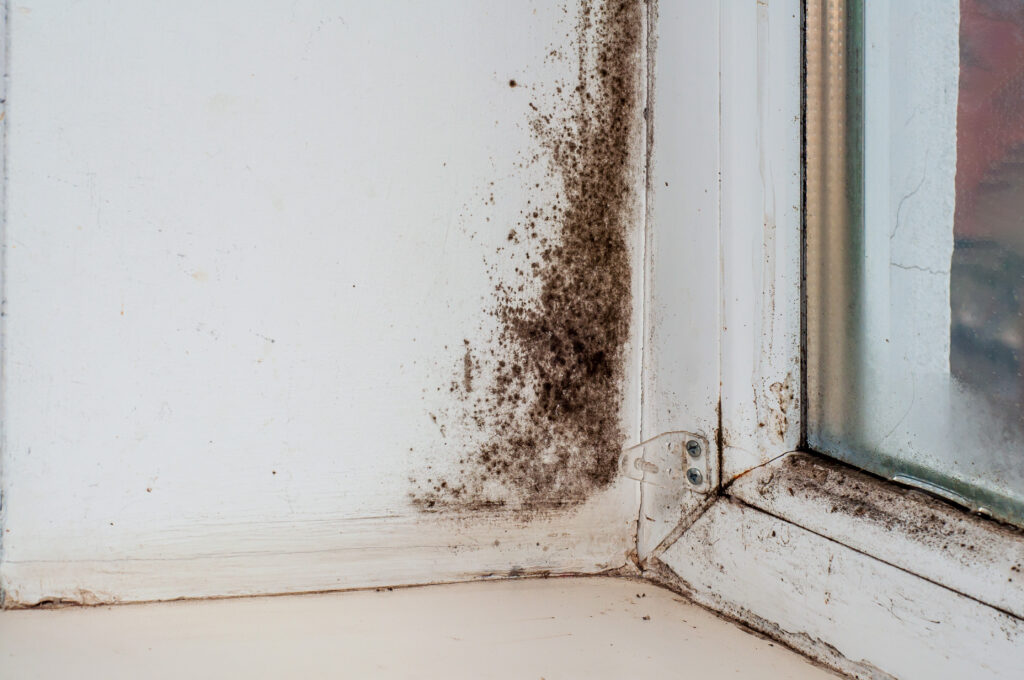
HVAC system concerns such as particulates emanating from the system, stagnant or stale air, drafty conditions, or pressure balance issues, indicate a need for a professional to inspect for malfunctions, design flaws, or contamination within the system. If there is good reason to believe a specific, hazardous contaminant (e.g., high levels of VOCs, pesticides, asbestos, lead, or radon) is present, especially if a source has been identified or medical evaluations indicate exposure, professional testing is crucial. Suspected cases of serious building-related illnesses, such as Legionnaire’s Disease, also demand immediate professional intervention.
If in-house efforts to identify and resolve IAQ problems have been unsuccessful, despite diligent application of source control and ventilation strategies, it is time to seek outside help. Furthermore, in situations where mistrust develops between occupants and building management, or when litigation or workers’ compensation claims are likely due to unresolved IAQ concerns, an independent investigation by a professional can provide a credible diagnosis and recommendations.
When choosing a professional, it is advisable to seek qualified industrial hygienists, as they possess the expertise to evaluate environmental factors affecting health and comfort. Caution is advised against contractors who may overstep their expertise or have a financial stake in the outcome of the investigation. Always verify applicable state or federal certifications for professionals dealing with specific hazards like asbestos, lead, or radon.
Creating a Healthier Home Environment
The pursuit of optimal indoor air quality is an essential aspect of fostering a healthy and comfortable living environment. This comprehensive guide has elucidated the critical importance of IAQ, revealing that due to the significant amount of time spent indoors and the often higher concentrations of certain pollutants within buildings, indoor air quality can be as, if not more, critical than outdoor air quality.
Effective IAQ management necessitates a multi-faceted and layered approach. This strategy begins with the fundamental principle of source control, which involves identifying and eliminating or significantly reducing the emission of pollutants at their origin. This foundational step is then augmented by effective ventilation strategies, ensuring a consistent exchange of stale indoor air with fresh outdoor air. Finally, appropriate air purification technologies serve to supplement these efforts, targeting specific pollutants that may remain. Understanding the specific characteristics of common indoor pollutants—such as VOCs, mold, allergens, humidity, carbon monoxide, radon, and secondhand smoke—and their respective sources is the crucial first step in effective management. While consumer-grade tools can offer basic insights and general awareness, professional assessment remains indispensable for accurate diagnosis and effective remediation of complex or persistent IAQ issues.
Embracing a holistic approach to IAQ signifies an ongoing commitment. This involves making mindful product choices, adhering to consistent cleaning habits, ensuring proper maintenance of building systems (especially HVAC), and maintaining an awareness of environmental factors that influence indoor air. The concept of a “layered defense”—eliminating sources, diluting with fresh air, and filtering remaining pollutants—provides a robust framework for action. It is also important to recognize that the health of a building and the health of its occupants are intrinsically linked; investments in one invariably benefit the other.
By taking proactive steps, homeowners can significantly reduce their exposure to indoor pollutants and cultivate a healthier, more comfortable living space for themselves and their families. Regular monitoring, whether through consumer devices for general awareness or through professional services for specific concerns, is key to maintaining optimal indoor air quality over time. Ultimately, prioritizing education and informed decision-making when selecting products or services related to indoor air quality empowers individuals to safeguard their well-being and create a truly restorative home environment.



